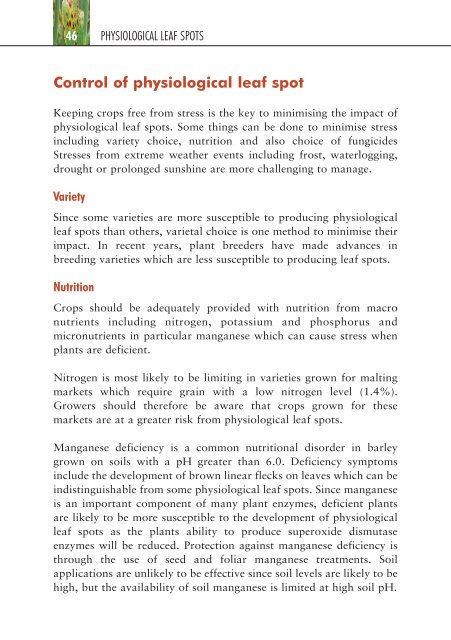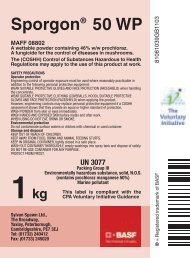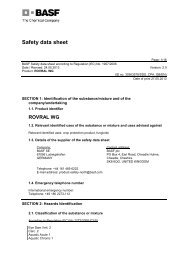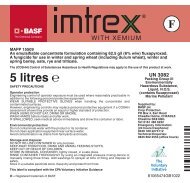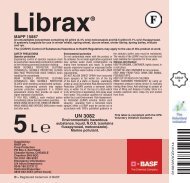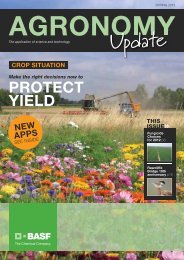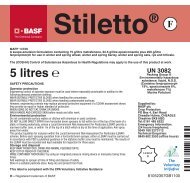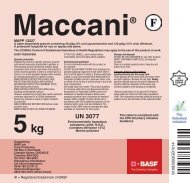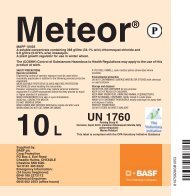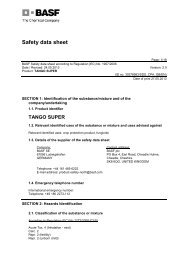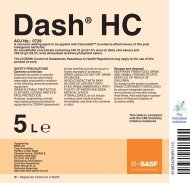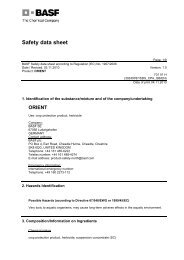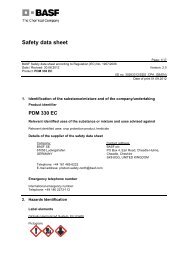a guide to the recognition and understanding of ramularia and other ...
a guide to the recognition and understanding of ramularia and other ...
a guide to the recognition and understanding of ramularia and other ...
You also want an ePaper? Increase the reach of your titles
YUMPU automatically turns print PDFs into web optimized ePapers that Google loves.
46<br />
Control <strong>of</strong> physiological leaf spot<br />
Keeping crops free from stress is <strong>the</strong> key <strong>to</strong> minimising <strong>the</strong> impact <strong>of</strong><br />
physiological leaf spots. Some things can be done <strong>to</strong> minimise stress<br />
including variety choice, nutrition <strong>and</strong> also choice <strong>of</strong> fungicides<br />
Stresses from extreme wea<strong>the</strong>r events including frost, waterlogging,<br />
drought or prolonged sunshine are more challenging <strong>to</strong> manage.<br />
Variety<br />
Since some varieties are more susceptible <strong>to</strong> producing physiological<br />
leaf spots than o<strong>the</strong>rs, varietal choice is one method <strong>to</strong> minimise <strong>the</strong>ir<br />
impact. In recent years, plant breeders have made advances in<br />
breeding varieties which are less susceptible <strong>to</strong> producing leaf spots.<br />
Nutrition<br />
PHYSIOLOGICAL LEAF SPOTS<br />
Crops should be adequately provided with nutrition from macro<br />
nutrients including nitrogen, potassium <strong>and</strong> phosphorus <strong>and</strong><br />
micronutrients in particular manganese which can cause stress when<br />
plants are deficient.<br />
Nitrogen is most likely <strong>to</strong> be limiting in varieties grown for malting<br />
markets which require grain with a low nitrogen level (1.4%).<br />
Growers should <strong>the</strong>refore be aware that crops grown for <strong>the</strong>se<br />
markets are at a greater risk from physiological leaf spots.<br />
Manganese deficiency is a common nutritional disorder in barley<br />
grown on soils with a pH greater than 6.0. Deficiency symp<strong>to</strong>ms<br />
include <strong>the</strong> development <strong>of</strong> brown linear flecks on leaves which can be<br />
indistinguishable from some physiological leaf spots. Since manganese<br />
is an important component <strong>of</strong> many plant enzymes, deficient plants<br />
are likely <strong>to</strong> be more susceptible <strong>to</strong> <strong>the</strong> development <strong>of</strong> physiological<br />
leaf spots as <strong>the</strong> plants ability <strong>to</strong> produce superoxide dismutase<br />
enzymes will be reduced. Protection against manganese deficiency is<br />
through <strong>the</strong> use <strong>of</strong> seed <strong>and</strong> foliar manganese treatments. Soil<br />
applications are unlikely <strong>to</strong> be effective since soil levels are likely <strong>to</strong> be<br />
high, but <strong>the</strong> availability <strong>of</strong> soil manganese is limited at high soil pH.


